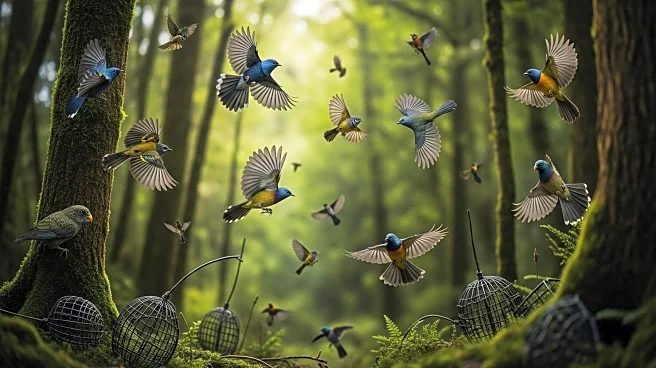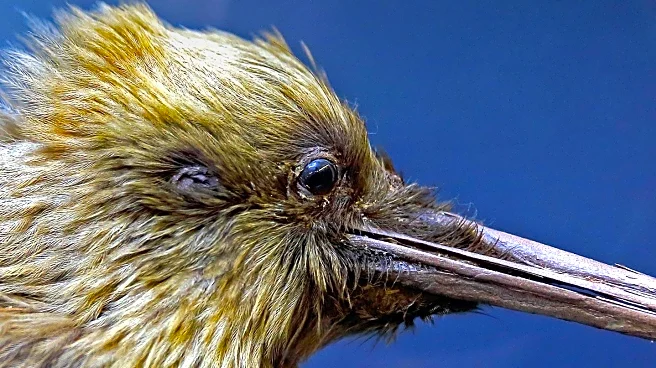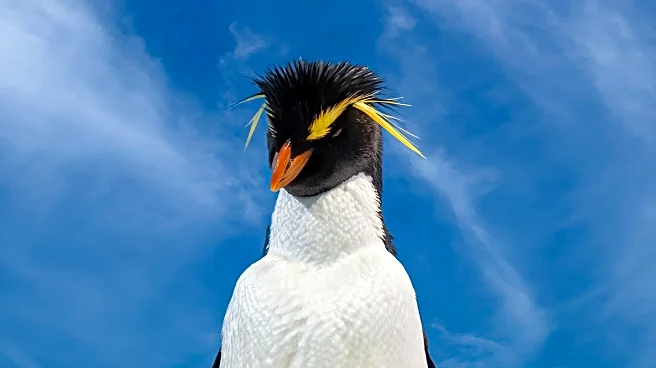What is the story about?
What's Happening?
New Zealand is undertaking a significant conservation effort aimed at saving its unique bird species from extinction. The country has set a goal to eradicate millions of invasive predators by 2050, which have been devastating native bird populations. Everyday citizens are actively participating in this initiative by trapping and killing invasive species such as possums and rats in their backyards and local parks. These efforts are part of a broader conservation ethos that is gaining momentum across the nation. The initiative is supported by community groups and volunteers, who are committed to preserving New Zealand's natural heritage.
Why It's Important?
The conservation project is crucial for protecting New Zealand's biodiversity, particularly its native bird species, which are highly vulnerable to invasive predators. The success of this initiative could serve as a model for other countries facing similar ecological challenges. By involving the public, New Zealand is fostering a culture of environmental stewardship and responsibility. The eradication of invasive species is expected to lead to the recovery of native bird populations, contributing to the overall health of the ecosystem. This project highlights the importance of community involvement in achieving large-scale environmental goals.
What's Next?
The goal of eliminating invasive predators by 2050 is ambitious and will require sustained public engagement and possibly new technologies. Conservation experts emphasize the need for continuous vigilance and adaptation of strategies to ensure long-term success. As the project progresses, there may be increased investment in research and development of more effective trapping methods. The government and conservation groups will likely continue to promote public awareness and participation to maintain momentum towards achieving the 2050 target.
Beyond the Headlines
The ethical implications of the project are significant, as it involves the deliberate killing of millions of animals. This raises questions about the balance between conservation and animal rights. The initiative also reflects broader social changes, as it requires public buy-in and a shift in attitudes towards invasive species management. The project could lead to innovations in conservation technology and methods, potentially influencing global conservation practices.
AI Generated Content
Do you find this article useful?













